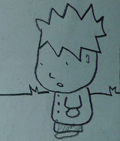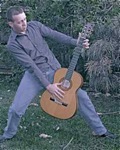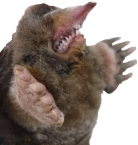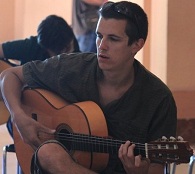Welcome to one of the most active flamenco sites on the Internet. Guests can read most posts but if you want to participate click here to register.
This site is dedicated to the memory of Paco de Lucía, Ron Mitchell, Guy Williams, Linda Elvira, Philip John Lee, Craig Eros, Ben Woods, David Serva and Tom Blackshear who went ahead of us.
We receive 12,200 visitors a month from 200 countries and 1.7 million page impressions a year. To advertise on this site please contact us.
|

|
|
[Deleted]
|
You are logged in as Guest
|
|
Users viewing this topic: none
|
|
Login  | |
|

   
NormanKliman
Posts: 1143
Joined: Sep. 1 2007

|
 RE: Arpeggio to Picado transitions (in reply to Guest) RE: Arpeggio to Picado transitions (in reply to Guest)
|
|
|
Hi Lionel,
Very interesting subject. As usual, this message ended up longer than I intended, but these are just some tips that work for me. The basic idea is to take it as a single "technique" rather than two techniques put together.
There really shouldn't be much difference in the finger movements used in picado and those used in arpeggios, so make sure that you're not significantly changing the positioning of your right hand to do picados. I'm not saying that you do this, but many guitarists use strange right-hand postures for picado. Figuratively, it's as if they were instinctively ducking their heads or gritting their teeth or clenching up or something when they have to do a picado. Literally, this can involve keeping the last joint of the thumb (the one with the nail) bent and pressed against the soundboard, or maybe straightening the index and middle fingers for the picado. This is nearly always because somebody has told them to do it that way or because they saw Paco play that way (Paco uses the bent thumb in a few early videos). Not saying that these are wrong ways of doing picado, because everyone's hands are different, etc., but I think they're usually inefficient ways based on someone else's point of view (...on someone else's hands!  ). In any case, you certainly can't expect things to flow if you use radically different finger/hand positioning for the two techniques. If you want it to flow, make it easy for that to happen. ). In any case, you certainly can't expect things to flow if you use radically different finger/hand positioning for the two techniques. If you want it to flow, make it easy for that to happen.
If you think about it, picado is really a silly little two-finger technique that anybody can do (speed is another matter), so it's absolutely necessary to find a simple and relaxed way of doing it, rather than thinking something like, "This is the hardest of all techniques, but there's a special hand position that makes it easier." Again, not saying that you do that, but I know many guitarists do.
Have a look at this: Rest your thumb on the sixth string and put a-m-i on the trebles, as if you were going to pluck the four strings. Notice that, if you keep all four fingers in contact with the strings and move your palm a little closer to the guitar, this "flattens" the arch formed by your right hand and sharpens the angle of the bent middle knuckle in the i-m-a fingers. My advice is to make sure that this arch changes as little as possible whenever you play. I try to visualize a steady right hand (like a mitten rather than a spider) held in the same arch at all times. Underneath that unchanging arch, the fingers are doing whatever they're doing (like a centipede's legs) but the arch doesn't change. From the shoulder down to the fingertips, there should be little difference between picado and arpeggios.
Along with the idea of the arch, the other important thing is to keep your thumb in light contact with the strings at all times. The idea is that your thumb acts as a guide to let your fingers know where the strings are. It's like walking down stairs in the dark and keeping one hand in contact with a wall or handrail so that your feet know where to find the next step. (Okay, enough weird metaphors!  ) For example, in the tab in your post, after your thumb plays that E on the fourth string, make sure that it comes back into contact with one of the strings. The way I do it, after the fourth-string E, the thumb comes up, and I lightly press it against the fourth string using the pad of skin that's on the left side of my thumb next to the nail. The movement nearly coincides with the next note, which is the index on the third string. There are several ways to do this, just make sure that you're not doing anything "strange," like sticking your thumb up in the air or something. ) For example, in the tab in your post, after your thumb plays that E on the fourth string, make sure that it comes back into contact with one of the strings. The way I do it, after the fourth-string E, the thumb comes up, and I lightly press it against the fourth string using the pad of skin that's on the left side of my thumb next to the nail. The movement nearly coincides with the next note, which is the index on the third string. There are several ways to do this, just make sure that you're not doing anything "strange," like sticking your thumb up in the air or something.
I agree entirely with the ring-finger rest stroke on the first string.
Hope that helps!
_____________________________
Be here now.
|
|
|
|
REPORT THIS POST AS INAPPROPRIATE |
Date Dec. 21 2009 0:28:53
 |
|

   
Ricardo
Posts: 14861
Joined: Dec. 14 2004
From: Washington DC

|
 RE: Arpeggio to Picado transitions (in reply to Guest) RE: Arpeggio to Picado transitions (in reply to Guest)
|
|
|
Simply put, you need to think purely rhythmically about the phrase, and groove with it....then once you feel the whole phrase and each note in it, you increase tempo. Simple as that. So what is the rhythm? Depends on the palo, but taken as is, I would do groups of 4 or 8 per beat. So that means, regardless if you do rest or free on the top string, you need to accent the G note, the 3rd fret....NOT the E or the F#, in order to make the phrase flow. Emphasis on the F# could be what throws off the time and the feel, and prevents you from speeding up and keeping it clean. You should infact practice STOPPING on the G note on the beat. And repeat over and over until you can do it fast and clean. 1e&ah,2e&ah,THREE!....repeat. phpp,imai,m. I would personally do a finger tirando. Later add on the next group of 4 notes and stop on the C note first fret. Continue adding groups of 4 until you got the entire phrase fast and in rhythm.
Another idea is to start rest strokes on the G string, on the BEAT, not really what I would do, but some players will do rest stroke arps for a consistency of tone.
_____________________________
CD's and transcriptions available here:
www.ricardomarlow.com
|
|
|
|
REPORT THIS POST AS INAPPROPRIATE |
Date Dec. 21 2009 15:50:17
 |
|
 New Messages New Messages |
 No New Messages No New Messages |
 Hot Topic w/ New Messages Hot Topic w/ New Messages |
 Hot Topic w/o New Messages Hot Topic w/o New Messages |
 Locked w/ New Messages Locked w/ New Messages |
 Locked w/o New Messages Locked w/o New Messages |
|
 Post New Thread
Post New Thread
 Reply to Message
Reply to Message
 Post New Poll
Post New Poll
 Submit Vote
Submit Vote
 Delete My Own Post
Delete My Own Post
 Delete My Own Thread
Delete My Own Thread
 Rate Posts
Rate Posts
|
|
|
Forum Software powered by ASP Playground Advanced Edition 2.0.5
Copyright © 2000 - 2003 ASPPlayground.NET |
0.078125 secs.
|


 Printable Version
Printable Version








 ). In any case, you certainly can't expect things to flow if you use radically different finger/hand positioning for the two techniques. If you want it to flow, make it easy for that to happen.
). In any case, you certainly can't expect things to flow if you use radically different finger/hand positioning for the two techniques. If you want it to flow, make it easy for that to happen. 

 New Messages
New Messages No New Messages
No New Messages Hot Topic w/ New Messages
Hot Topic w/ New Messages Hot Topic w/o New Messages
Hot Topic w/o New Messages Locked w/ New Messages
Locked w/ New Messages Locked w/o New Messages
Locked w/o New Messages Post New Thread
Post New Thread